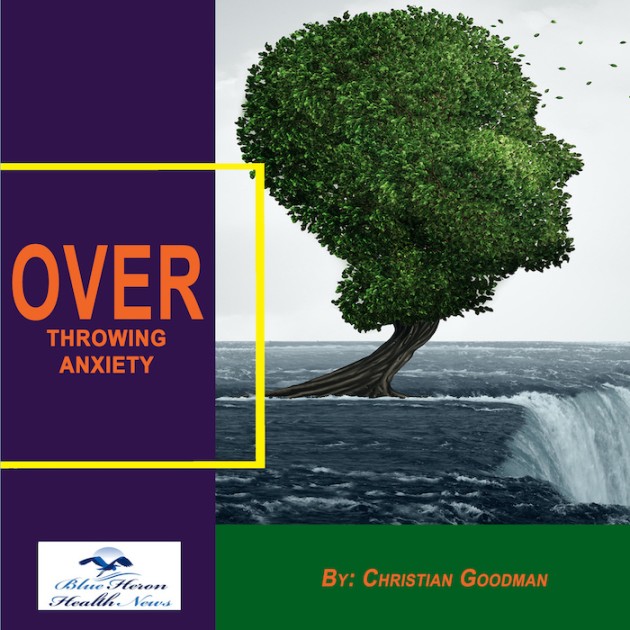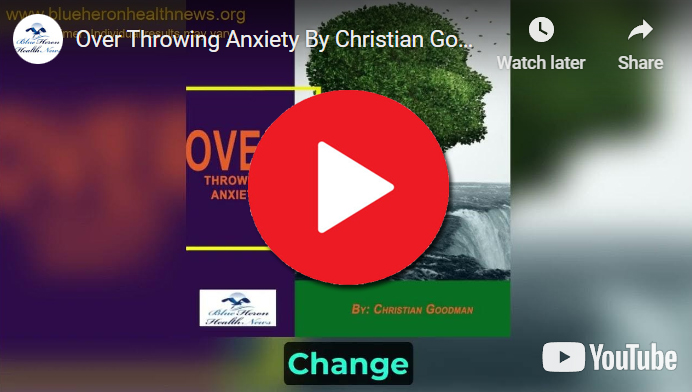
Overthrowing Anxiety™ This eBook includes a complete program to treat anxiety effectively. It guides you to learn the ways to find, understand, and accept the main cause of your anxiety and start using the techniques provided in it to treat the problem.
What is the connection between low blood pressure and hypoglycemia?
Low blood pressure (hypotension) and hypoglycemia (low blood sugar) can be connected, particularly because both conditions can result in similar symptoms and may be influenced by similar factors. Here’s how they are related:
1. Shared Symptoms
- Both low blood pressure and hypoglycemia can lead to symptoms such as dizziness, weakness, fatigue, blurred vision, confusion, and fainting. This overlap can make it difficult to distinguish between the two conditions based on symptoms alone, especially if someone is experiencing both simultaneously.
2. Autonomic Nervous System Response
- Compensatory Mechanisms: When blood sugar drops (hypoglycemia), the body activates the sympathetic nervous system (also known as the “fight or flight” system), which releases adrenaline (epinephrine) to raise blood sugar and counteract the effects of hypoglycemia. Adrenaline can also cause blood vessels to constrict and increase heart rate, which helps raise blood pressure. However, in some people, especially those with certain health conditions (e.g., autonomic dysfunction), the response may not be sufficient, leading to both low blood sugar and low blood pressure.
- Vasodilation: In hypoglycemia, the release of certain hormones (like adrenaline and cortisol) can also cause blood vessels to dilate (vasodilation), leading to a drop in blood pressure. This can be particularly problematic if someone already has low blood pressure, as it may exacerbate the symptoms of both conditions.
3. Impact on the Circulatory System
- Reduced Blood Flow: In cases of hypoglycemia, the body may have less energy available for normal functions, including maintaining stable blood pressure. Additionally, low blood pressure can reduce the efficiency of blood circulation, including the delivery of glucose to tissues, which can further aggravate hypoglycemia.
- Adrenaline Response: While adrenaline works to raise blood sugar levels during hypoglycemia, it can also cause vasoconstriction (narrowing of blood vessels), which may initially raise blood pressure. However, if the hypoglycemia is severe or prolonged, the body’s compensatory mechanisms can become overwhelmed, and blood pressure may drop.
4. Hypoglycemia as a Trigger for Low Blood Pressure
- Postprandial Hypotension: After eating, blood is directed to the digestive system to aid in digestion, which can lead to a temporary drop in blood pressure (postprandial hypotension). If someone has hypoglycemia, especially in the context of diabetes or insulin use, the body’s response to low blood sugar (e.g., insulin or glucose therapy) may cause further fluctuations in blood pressure.
- Medications: Some medications used to manage hypoglycemia, such as insulin or sulfonylureas (in people with diabetes), can also lower blood pressure as a side effect, making it more likely for someone to experience both low blood sugar and low blood pressure.
5. Chronic Conditions
- Diabetes: People with diabetes who have poorly controlled blood sugar levels may experience both hypoglycemia and hypotension more frequently. Diabetes can damage blood vessels and nerves, contributing to problems with blood pressure regulation and glucose control. This can increase the risk of both conditions occurring together.
- Adrenal Insufficiency: Conditions like Addison’s disease, which affect the adrenal glands, can lead to both low blood pressure and hypoglycemia because the adrenal glands produce hormones that regulate both blood pressure and blood sugar.
Managing Both Conditions:
- Monitoring: People who experience both low blood pressure and hypoglycemia should carefully monitor their blood sugar levels and blood pressure regularly, especially if they have diabetes or other risk factors.
- Dietary Considerations: Eating balanced meals with adequate carbohydrates, protein, and healthy fats can help prevent both low blood sugar and low blood pressure. Avoiding large, heavy meals and ensuring adequate hydration are also important strategies.
- Medication Adjustments: If medications for blood pressure or blood sugar are contributing to low levels of both, adjustments may be necessary under the guidance of a healthcare provider.
In summary, while low blood pressure and hypoglycemia are distinct conditions, they can be interconnected due to similar compensatory mechanisms, overlapping symptoms, and shared risk factors, such as diabetes or certain medications. Managing both conditions typically involves careful monitoring and a comprehensive approach that addresses both blood pressure and blood sugar control.
Managing low blood pressure (hypotension) through self-care can help alleviate symptoms and prevent complications. Here are some effective strategies to incorporate into your daily routine:
1. Stay Hydrated
- Drink Plenty of Fluids: Dehydration can lower blood volume, which may contribute to low blood pressure. Drink water, herbal teas, or electrolyte-rich drinks like coconut water to help maintain fluid balance.
- Avoid Excessive Alcohol: Alcohol can dehydrate the body and lower blood pressure, so it’s best to limit alcohol intake or avoid it altogether.
2. Eat a Balanced Diet
- Small, Frequent Meals: Eating smaller meals more frequently can help prevent blood pressure from dropping after meals (postprandial hypotension). Avoid large, heavy meals that can divert blood flow to the digestive system and cause a drop in blood pressure.
- Increase Salt Intake (with Caution): Salt helps raise blood pressure. However, before increasing sodium intake, consult with your doctor, especially if you have other health conditions like heart disease or kidney problems.
- Balanced Nutrition: Ensure that your diet includes sufficient amounts of essential nutrients, particularly vitamins and minerals like vitamin B12, folate, and iron, which help prevent anemia and support overall blood health.
3. Wear Compression Stockings
- Support for Legs: Compression stockings can help reduce the pooling of blood in the legs and improve circulation, which may reduce the symptoms of low blood pressure, particularly when standing up.
4. Avoid Sudden Position Changes
- Rise Slowly: To prevent dizziness or fainting when standing up, rise slowly from a sitting or lying position. This gives your body time to adjust and can help prevent a sudden drop in blood pressure.
- Elevate Your Head While Sleeping: Raising the head of your bed by a few inches can help prevent blood from pooling in your legs when lying down, improving circulation.
5. Regular Physical Activity
- Exercise Regularly: Moderate, regular exercise, such as walking, swimming, or cycling, can help improve circulation and raise blood pressure. Avoid overly strenuous exercises, as they may have the opposite effect.
- Leg and Calf Exercises: Simple leg exercises, like calf raises, can help improve circulation and prevent blood from pooling in your legs, especially if you spend a lot of time sitting.
6. Monitor Blood Pressure
- Regular Monitoring: Check your blood pressure regularly to track any changes. Keeping a log of your readings can help you and your healthcare provider determine whether additional measures are needed.
- Know When to Seek Medical Help: If you experience severe symptoms like fainting, dizziness, or confusion, or if your blood pressure drops very low, seek medical attention immediately.
7. Manage Stress
- Practice Relaxation Techniques: Stress can worsen low blood pressure symptoms. Incorporate stress-relieving activities into your daily routine, such as meditation, yoga, deep breathing exercises, or mindfulness.
- Avoid Prolonged Stress: Take breaks throughout the day to relax and unwind, especially if you have a stressful job or lifestyle.
8. Get Enough Rest and Sleep
- Prioritize Sleep: Lack of sleep can contribute to low blood pressure. Aim for 7-9 hours of quality sleep each night to support overall health and help regulate blood pressure.
- Rest When Needed: If you feel lightheaded or fatigued, take a break and rest to allow your body to recover. Avoid overexertion, particularly if you’re experiencing symptoms of low blood pressure.
9. Caffeine in Moderation
- Caffeine Boost: In some cases, consuming a small amount of caffeine (such as coffee or tea) can temporarily raise blood pressure. However, use caffeine in moderation and be mindful of how it affects you, as it may not be suitable for everyone, particularly those with certain heart conditions.
10. Review Medications
- Consult Your Doctor About Medications: If you’re on medications that might be contributing to low blood pressure (such as diuretics or beta-blockers), talk to your healthcare provider about alternatives or adjustments. Never change medications without professional guidance.
11. Monitor for Hypoglycemia
- Blood Sugar Levels: If you have diabetes or are prone to low blood sugar (hypoglycemia), keep track of your blood sugar levels, as low blood sugar can contribute to low blood pressure. Eating balanced meals and snacks can help prevent drops in blood sugar.
By incorporating these self-care practices into your routine, you can manage low blood pressure more effectively and improve your overall quality of life. Always consult with your healthcare provider before making significant changes to your diet, exercise, or medication regimen.
Overthrowing Anxiety™ This eBook includes a complete program to treat anxiety effectively. It guides you to learn the ways to find, understand, and accept the main cause of your anxiety and start using the techniques provided in it to treat the problem.
